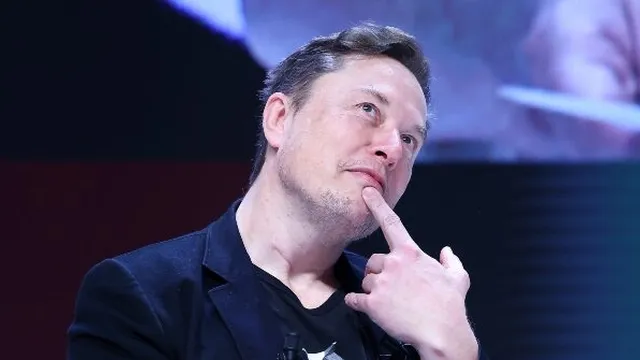
Tesla in self-driving mode hits train after bypassing crossing barrier
2025-06-16 00:00- A Tesla Model 3 in self-driving mode bypassed a train crossing barrier and became stuck on train tracks.
- The driver and passengers safely exited the vehicle before it was hit by a train, with no injuries reported.
- This incident raises significant questions about the safety and reliability of Tesla's full self-driving technology.
Express your sentiment!
Insights
In a notable incident in Pennsylvania, a Tesla Model 3 operating in the company’s 'full self-driving' mode circumvented a crossing barrier and ended up stuck on train tracks. The event took place in Sinking Spring, and an unidentified driver managed to exit the vehicle safely with fellow passengers moments before the oncoming train collided with the car. Emergency services were promptly dispatched after reports of the incident, and the fire commissioner ordered the suspension of all train traffic in the area to facilitate the vehicle's recovery. The precarious situation emphasized the growing concerns surrounding Tesla's autonomous driving technology, particularly its ability to navigate critical situations like train crossings. Witnesses noted how the vehicle traveled down the tracks approximately 40-50 feet before hitting a point of entrapment. Upon arrival at the scene, fire commissioner Jared Renshaw found that all three occupants had already vacated the vehicle, and thankfully, none of them sustained injuries. The Tesla's side mirror was damaged during the incident, highlighting the severity of the situation. Notably, this incident raises important questions about the safety protocols of self-driving technology, especially as Tesla continues to promote the capabilities of its vehicles amidst a backdrop of past fatal accidents linked to the company's autonomous driving features. Concerns have been heightening due to previous incidents involving Tesla vehicles in self-driving mode. For example, a recent crash in Arizona revealed critical limitations in the system, as the Tesla failed to adequately respond to a situation with multiple stopped vehicles and a person directing traffic. Such occurrences have instigated closer scrutiny of Tesla’s autonomous vehicle technology. The National Highway Traffic Safety Administration (NHTSA) has also responded by requesting detailed information regarding Tesla’s operational systems and safety measures. This latest incident reinforces the urgency for Tesla to address these pressing safety concerns as they push towards full deployment of their autonomous systems and the ambitious launch of a robotaxi service in Austin, Texas. As Tesla continues this journey, the implications of their self-driving capabilities not only affect users and potential passengers but call into question the standards and regulations surrounding autonomous vehicles within the broader automotive industry. The combination of technological advancement and the real-world consequences of its utilization creates a complex discussion point for regulators and the public alike.
Contexts
Tesla has emerged as a leader in the development and implementation of autonomous vehicle technology, consistently pushing the boundaries of what is possible in this rapidly evolving sector. The safety of these vehicles has become a paramount concern, given the potential implications for public safety and regulatory compliance. Tesla's approach to safety regulations is multifaceted, involving both rigorous internal testing and collaboration with regulatory bodies. The company has implemented a comprehensive suite of safety measures aimed at ensuring that its autonomous vehicles operate safely under various conditions. This includes extensive simulations, real-world testing, and leveraging data from its fleet to continuously improve its software systems and hardware reliability. The regulatory landscape surrounding autonomous vehicles is still developing, with agencies such as the National Highway Traffic Safety Administration (NHTSA) and the European Union's regulations playing crucial roles in shaping standards. Tesla actively engages with these entities to influence the formation of guidelines that govern the safe operation of autonomous technology. The company advocates for a balanced approach to regulation, emphasizing the need to be flexible in order to foster innovation while prioritizing safety. The introduction of safety protocols, including standardized testing procedures and public reporting of safety metrics, illustrates Tesla’s commitment to accountability and transparency in its operations. Challenges remain in the domain of autonomous vehicle safety, including public perception, liability issues, and the pace at which regulations can adapt to technological advances. Despite the challenges, Tesla continues to demonstrate a proactive stance in addressing safety concerns, including the development of state-of-the-art driver assistance systems that enhance safety while providing the foundation for fully autonomous driving in the future. Additionally, the company’s use of over-the-air software updates enables the continuous improvement of safety features post-deployment, which is a significant advantage in enhancing overall vehicle performance and reliability. Looking forward, the path to fully autonomous driving is fraught with regulations that will likely evolve as technology advances, making it imperative for Tesla to remain vigilant and adaptable. The company’s commitment to safety will play a critical role in shaping the future of transportation, with the aim of achieving a goal where autonomous vehicles can operate without the need for human intervention while maintaining safety as a top priority. As regulations become more defined and public trust in the technology increases, Tesla's autonomous vehicles will be well-positioned to set benchmarks in safety standards that other manufacturers will likely follow.